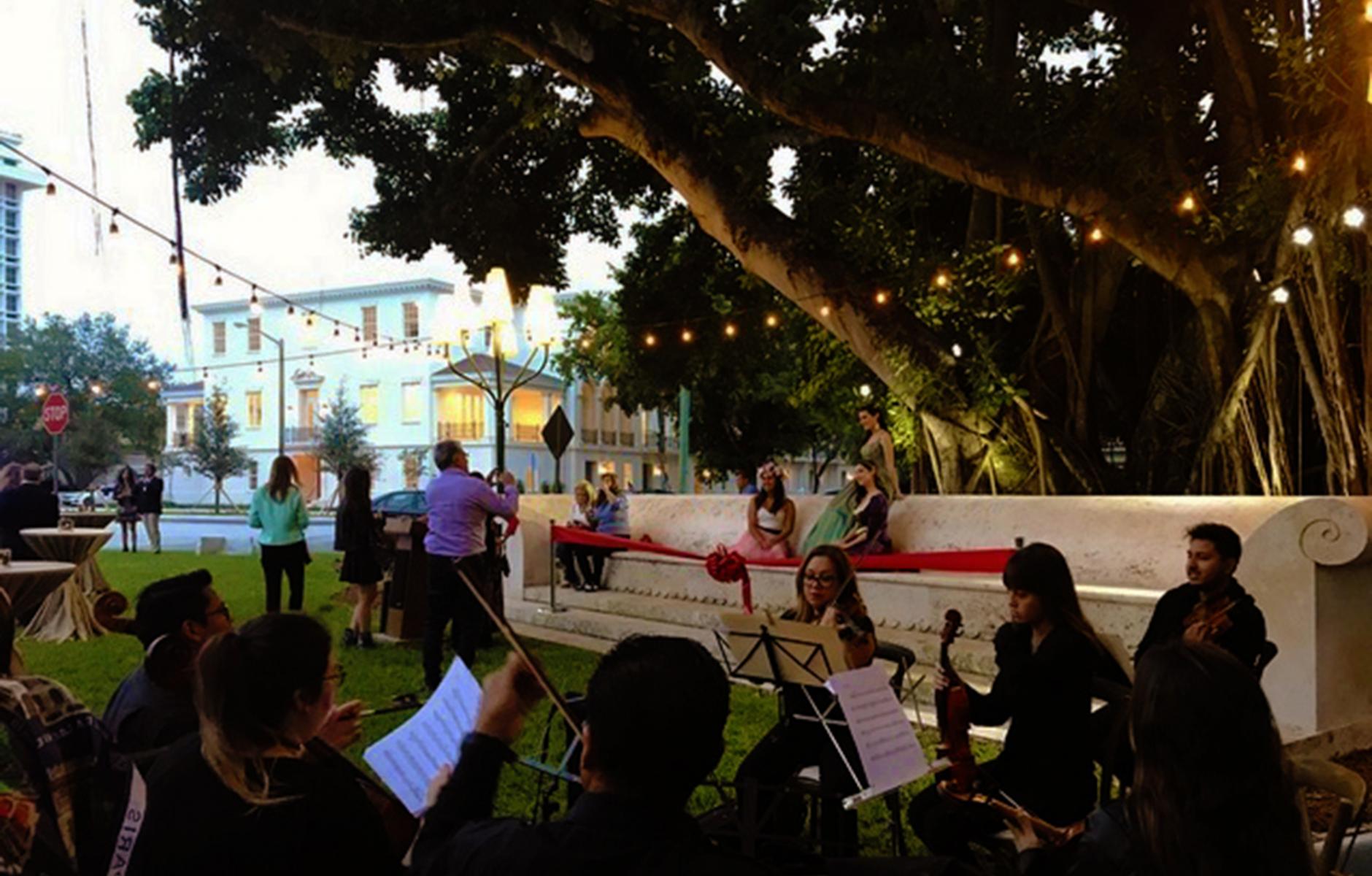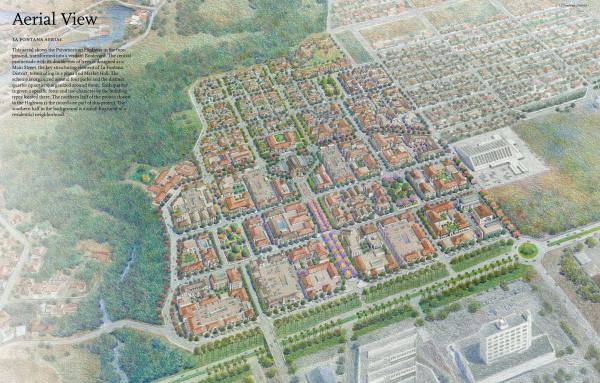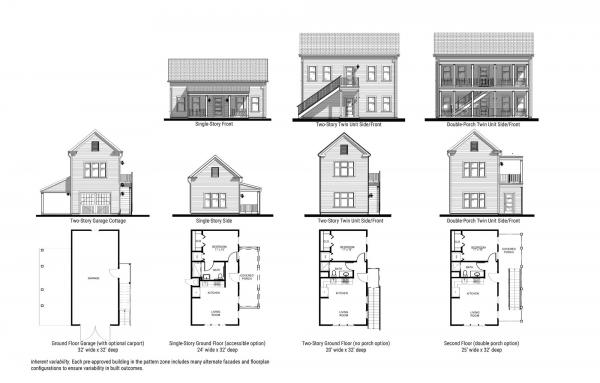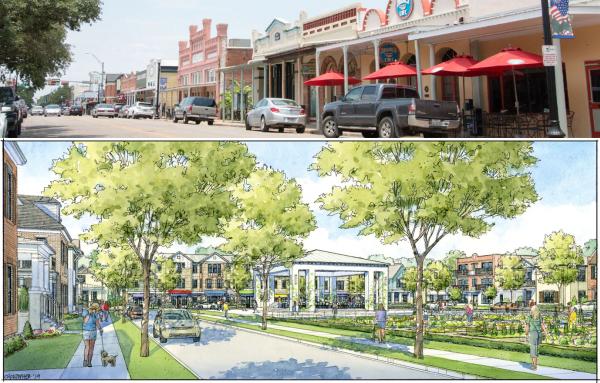
Introducing townhouse living to a city
Beatrice Row elegantly introduces a new building type, the townhouse, to the City of Coral Gables in a way that allows a transition between the high-rise downtown to surrounding single-story detached neighborhoods. The design elegantly employs classical architecture on an infill site.
The block of townhouses required changes to the zoning code to allow for zero-lot-line, fee-simple residential units, which means that Coral Gables now has a new tool to enable higher-density, low-rise housing in appropriate locations.
“This is a great demonstration of how to introduce townhouses into a market that isn’t comfortable with that building type,” says Marieanne Khoury-Vogt, an architect and juror.
Moreover, Beatrice Row activated a nearby park, off-site but within view of the development, with public art that contributes to a sense of community. An extra-long masonry bench, also classically designed, transforms the park into a community hangout and special events location (see photo at top, with Beatrice Row in the background).
“It’s a fantastic piece of art, it makes the park, it makes the area and turns the park into an incredible place,” notes Peter Iglesias, Coral Gables City Manager.

Completed in 2019, Beatrice Row consists of nine townhouses in a location that allows for walking to all of the downtown assets and amenities. The elevation of the terrace house addresses the abrupt change from high rise to single story and creates an elegant, pedestrian-oriented street section.
The incorporation of townhouse guidelines to the city's zoning occurred at a time when the municipal government was under pressure to limit development and, coincidentally, the developers were eager to introduce a residential type that offered a high standard of urban living within lower surrounding densities, notes the project team.

Through the quality of the construction, the streets and parks in the vicinity of the project are enhanced as public space, promoting shared used by Beatrice Row residents and the general public. The houses are built close to the sidewalk, which is separated from the street by a parkway lined with old mahogany trees. The project embraces the lush landscape of the subtropical climate of South Florida. Whenever possible, the mahoganies, live oaks and ficus trees on the site were preserved or transplanted to more adequate locations within the site.
Because each townhome is entered at grade, directly from the sidewalk through an open vestibulum, the street is animated with pedestrian traffic.The proportion of width to height of the townhouse type, the repetition of the unit, and the proximity of the stoop to the sidewalk are all familiar urban elements, and yet they are out of the ordinary for Coral Gables. The building consists of a brick base and stuccoed two-story mass above topped with a pre-cast cornice and parapet. The sandstone brick base runs the length of the building and it relates the existing neighborhood fabric of 1950s architecture.
Beatrice Row recovers a housing option which is as old and universal as city-building itself, and adapts classical design principles to the South Florida climate and geography. It is based on an architecture that is committed to bringing “comfort and pleasure to mankind, to individual and community alike,” note the architects.
Beatrice Row: The discreet urbanism of the row house
- Architect: de la Guardia Victoria Architects & Urbanists
- Client: MG Developer
- Builder: Torre Companies
- Artist: R&R Studios
- Landscape Architect: H.L. Martin, Landscape Architect, PA
- Stone Mason: Marmotech S.A
- MEP engineer: ARPE Engineering, Inc.
- Structural Engineer: Francisco Cuello Jr. PE, Inc.
- Civil Engineer: Marco A. Osorio, P.E., MBA
- Brick Mason: Brandel Masonry, Inc.
- Photographer: Carlos Domenech Photography
2020 Charter Awards Jury
- Goeff Dyer (chair), Master Planning and Urban Design Strategic Lead, B&A Planning Group
- Marieanne Khoury-Vogt, Khoury Vogt Architects
- Mitch Silver, Commissioner of New York City Department of Parks and Recreation
- Andrew Von Maur, Professor of Architecture at Andrews University
- Allison Quinlan, owner, Flintlock Architecture & Landscape








